26th September 2008 - New research
L-DOPA CO-DRUGS
Archiv der Pharmazie [2008] 341 (7) : 412-417
(Sozio P, Iannitelli A, Cerasa LS, Cacciatore I, Cornacchia C, Giorgioni
G, Ricciutelli M, Nasuti C, Cantalamessa F, Di Stefano A.)
Complete abstract
Since the advent of L-dopa decades ago, it has become progressively more
common to simultaneously administer L-dopa in combination with other
substances rather than as a single substance. Sinemet, Madopar and Stalevo
all include
three substances. This study reports the
preliminary evaluation of new L-dopa conjugates obtained by joining L-Dopa
with two different natural antioxidants, caffeic acid and carnosine.
Caffeic acid is found naturally in coffee and certain foods. For more
information go to
Caffeic acid. Carnosine is found
naturally in meat and
is available as a supplement. For more information go to
Carnosine.
 The antioxidant efficacy of these two substances was
assessed by evaluating the plasma activity of superoxide dismutase and
glutathione peroxidase. Brain concentration of L-dopa and dopamine, and
central nervous system effects were assessed after oral administration of
each of the codrugs. The results suggest that the codrugs are devoid of
significant antioxidant activity. However, it was found that they can
enable sustained delivery of dopamine and can improve L-dopa and dopamine
release in the brain. As L-dopa is not yet available as these two codrugs,
there is the possibility of taking the additional substances with L-dopa
in food or supplement form.
The antioxidant efficacy of these two substances was
assessed by evaluating the plasma activity of superoxide dismutase and
glutathione peroxidase. Brain concentration of L-dopa and dopamine, and
central nervous system effects were assessed after oral administration of
each of the codrugs. The results suggest that the codrugs are devoid of
significant antioxidant activity. However, it was found that they can
enable sustained delivery of dopamine and can improve L-dopa and dopamine
release in the brain. As L-dopa is not yet available as these two codrugs,
there is the possibility of taking the additional substances with L-dopa
in food or supplement form.
�
����������������������������������������������������������������������������������������������������������������������������������������������������������������������������� 19th September 2008 - News release
HUGE FUNDING FOR ENVIRONMENTAL CAUSES OF PARKINSON'S
DISEASE
The National Institute of Environmental
Health Sciences (NIEHS) announced today that it will award three new
grants totalling more than $20 million dollars to study how environmental
factors contribute to the cause, prevention and treatment of Parkinson's
Disease.
The three grantees include : (1) Gary Miller of Emory University,
Atlanta, who will be looking at how environmental and genetic factors
interact to alter these functions in dopamine neurons. They will be
attempting to develop new biomarkers in the blood that will help identify
people that may be at risk for developing Parkinson's disease; (2)
Marie-Fran�oise Chesselet of UCLA, who is aiming to show
associations between high levels of exposure
to specific environmental pesticides and Parkinson's' disease, and
determine
the mechanisms of action that may be causing this association; (3) Stuart
Lipton of the Burnham Institute for
Medical Research in California will explore how environmental toxicants
may contribute to Parkinson's Disease by producing free radical stress
that mimics or enhances the effects of known genetic mutations.
For more information these projects go to the
Complete article.
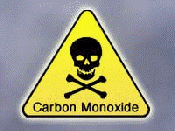 There are a number of known toxic causes of Parkinson's Disease. For more
information go to the
Toxic causes of Parkinson's Disease. However, the number of people
known to be suffering from Parkinson's Diisease due to any of these toxic
causes is very few.
Toxicity has never
been shown to be the primary cause of Parkinson's Disease.
There are a number of known toxic causes of Parkinson's Disease. For more
information go to the
Toxic causes of Parkinson's Disease. However, the number of people
known to be suffering from Parkinson's Diisease due to any of these toxic
causes is very few.
Toxicity has never
been shown to be the primary cause of Parkinson's Disease.
�
18th September 2008 - News release
AMGEN'S GDNF GENE RESUMES USE IN PARKINSON'S
DISEASE
The GDNF gene is
claimed to contain the information for a protein necessary for the
development and survival of nerve cells.
Several years ago, Amgen's use of GDNF was
being touted as a great breakthrough in Parkinson's Disease. During
Amgen's clinical trials of GDNF, patients were claiming that their
symptoms had been rid due to using it - even though some of those patients
had been taking the placebo instead. Amidst widespread protests,
Amgen
ceased its use of GDNF altogether due to studies showing that it caused
toxicity in animals.
The patients'
experiences were subsequently detailed in "Monkeys
in the Middle".
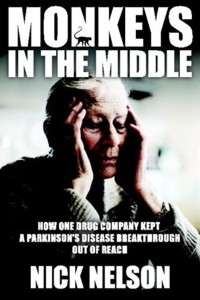 Amsterdam Molecular Therapeutics (AMT) have just announced that it has
obtained a license from Amgen to use their GDNF gene for the development
of a gene therapy treatment for Parkinson�s disease.
For more
information go to
AMT. In
theory, GDNF could biochemically increase somebody's ability to produce
their own dopamine. However, an animal study showed that this effect would
reverse over time. Since the Amgen clinical trial, in two small
independent open clinical trials involving 5 and 10 patients, a moderate
beneficial effect was shown. However, when a large controlled clinical
trial was later carried out by the same people, GDNF had no effect at all
in ridding Parkinson's Disease.
Amsterdam Molecular Therapeutics (AMT) have just announced that it has
obtained a license from Amgen to use their GDNF gene for the development
of a gene therapy treatment for Parkinson�s disease.
For more
information go to
AMT. In
theory, GDNF could biochemically increase somebody's ability to produce
their own dopamine. However, an animal study showed that this effect would
reverse over time. Since the Amgen clinical trial, in two small
independent open clinical trials involving 5 and 10 patients, a moderate
beneficial effect was shown. However, when a large controlled clinical
trial was later carried out by the same people, GDNF had no effect at all
in ridding Parkinson's Disease.
�
16th September 2008 - New review
�������������������������������������������������������������������������������������������������������������������������������������������������������������������
FUNGICIDE AS A CAUSE OF PARKINSON'S DISEASE
Maneb is a fungicide that contains manganese.
The major active element of Maneb is manganese ethylene-bis-dithiocarbamate.
Pesticides are known to be associated with an increased rate of
Parkinson's Disease [3].
 Common
means : Maneb is used as a fungicide. There is a greatly increased
likelihood of developing symptoms by people involved in horticulture and
agriculture [2].
Common
means : Maneb is used as a fungicide. There is a greatly increased
likelihood of developing symptoms by people involved in horticulture and
agriculture [2].
Means of toxicity : As Maneb contains manganese it is possible that it
causes Parkinson's Disease symptoms via the same means as manganese, which
is by inhibiting tyrosine hydroxylation, which is essential for the
formation of dopamine. It would thereby lower dopamine levels. The effects
of Maneb are potentiated when there is simultaneous exposure to the
pesticide Paraquat [4-8].
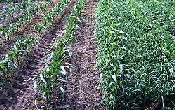 Symptoms
of toxicity : Plastic rigidity with cogwheel phenomenon, headache,
fatigue, nervousness, memory complaints, and sleepiness, other neurologic
signs, such as postural tremor, cerebellar signs, and bradykinesia [1];
damaging effects on the dopaminergic system [4-8], that it can, quite
unusually, even affect prior to birth [4-8]. This suggests that somebody
could be affected by fungicide because of exposure to it
during their pregnancy.
Symptoms
of toxicity : Plastic rigidity with cogwheel phenomenon, headache,
fatigue, nervousness, memory complaints, and sleepiness, other neurologic
signs, such as postural tremor, cerebellar signs, and bradykinesia [1];
damaging effects on the dopaminergic system [4-8], that it can, quite
unusually, even affect prior to birth [4-8]. This suggests that somebody
could be affected by fungicide because of exposure to it
during their pregnancy.
References : [1] Neurology [1988] 38 (4) : 550-553 (H.B.Ferraz,
P.H.Bertolucci, J.S.Pereira, J.G.Lima, L.A.Andrade), [2] Scandinavian
journal of work, environment & health. [2000] 26 (4) : 359-362 (F.Tuchsen,
A.A.Jensen), [3] Neurology [1998] 50 (5) : 1346-1350 (J.M.Gorell,
C.C.Johnson, B.A.Rybicki, E.L.Peterson, R.J.Richardson), [4] Birth defects
research. Part A, Clinical and molecular teratology [2005] 73 (3) :
136-139 (D.A.Cory-Slechta, M.Thiruchelvam, E.K.Richfield, B.K.Barlow,
A.I.Brooks), [5] Developmental neuroscience [2004] 26 (1) : 11-23 (B.K.Barlow,
E.K.Richfield, D.A.Cory-Slechta, M.Thiruchelvam), [6] The European journal
of neuroscience [2003] 18 (3) : 589-600 (M.Thiruchelvam, A.McCormack,
E.K.Richfield, R.B.Baggs, A.W.Tank, D.A.Di Monte, D.A.Cory-Slechta), [7]
Neurotoxicology [2002] 23 (4-5) : 621-633 (M.Thiruchelvam, E.K.Richfield,
B.M.Goodman, R.B.Baggs, D.A.Cory-Slechta), [8] The Journal of neuroscience
[2000] 20 (24) : 9207-9214 (M.Thiruchelvam, E.K.Richfield, R.B.Baggs,
A.W.Tank, D.A.Cory-Slechta)
�
9th September 2008 - New research
PAIN IN PARKINSON'S DISEASE
Archives of Neurology [2008] 65 (9) :
1191-1194 (Giovanni Defazio, Alfredo Berardelli, Giovanni Fabbrini, Davide
Martino, Emiliana Fincati, Antonio Fiaschi, Giuseppe Moretto, Giovanni
Abbruzzese, Roberta Marchese, Ubaldo Bonuccelli, Paolo Del Dotto, Paolo
Barone, Elisa De Vivo, Alberto Albanese, Angelo Antonini, Margherita
Canesi, Leonardo Lopiano, Maurizio Zibetti, Giuseppe Nappi, Emilia
Martignoni, Paolo Lamberti, Michele Tinazzi)
Complete abstract
The primary symptom of Parkinson's Disease is
excessive muscle contraction. Muscle contraction makes muscular cramps
more likely. However, Parkinson's Disease and muscular cramps are biochemically distinct. That is why there are people who have muscular
cramps who do not have Parkinson's Disease, and people with Parkinson's
Disease who do not have muscular cramps. A new study attempted to
determine whether pain is more frequent amongst people with Parkinson
Disease. The authors claim, and it has been widely reported, that pain was
significantly greater in people with Parkinson's Disease than others.
However, the results do
not really support what
has
been widely reported.
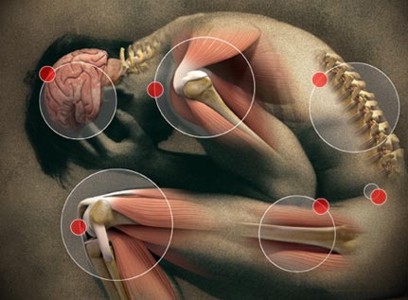 The frequency of pain in Parkinson's Disease was
70%, and 63% in others. What the study shows is that pain is common in
most people, regardless of whether or not they have Parkinson's Disease.
Parkinson's Disease makes it more likely, but not by much. The Dystonic
pain that is experienced by some in Parkinson's Disease, was claimed to
make the difference between the two groups, because non-dystonic pain was
almost equal in the two groups. Muscular cramps, as expected, were more
common in Parkinson's Disease. What the study shows is that Parkinson's
Disease, muscular cramps, and general pain should be considered as
separate medical problems.
The frequency of pain in Parkinson's Disease was
70%, and 63% in others. What the study shows is that pain is common in
most people, regardless of whether or not they have Parkinson's Disease.
Parkinson's Disease makes it more likely, but not by much. The Dystonic
pain that is experienced by some in Parkinson's Disease, was claimed to
make the difference between the two groups, because non-dystonic pain was
almost equal in the two groups. Muscular cramps, as expected, were more
common in Parkinson's Disease. What the study shows is that Parkinson's
Disease, muscular cramps, and general pain should be considered as
separate medical problems.
�
5th September 2008 - New product
PARKINSON'S DISEASE SUPPLEMENT
A supplement that is specifically for
Parkinson's Disease has been continuously reducing and ridding symptoms in
those people taking it. It consists, in optimal forms and optimal dosages,
of those substances that the brain normally uses to make its own dopamine.
Although it is often assumed that dopamine will make itself or has to be
taken in drug form, dopamine is produced naturally using specific
nutrients - most prominently, L-tyrosine, which is what L-dopa is made
from. For the background biochemistry of Parkinson's Disease go to :
Biochemistry of Parkinson's Disease and
Causes of Parkinson's Disease. The full effects of the supplement are
slow, taking a year or two or more. However, whilst reaching its full
effect, the supplement does not cause any side effects, and can be
taken
alongside all existing forms of treating Parkinson's Disease.
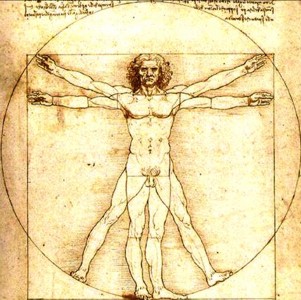 The
supplement is simply added on to what somebody is already taking. After
lengthy use, some people have already very gradually rid their Parkinson's
Disease symptoms. Others have hugely reduced their symptoms and continue
to improve. This has enabled some people to also rid or greatly reduce
their Parkinson's Disease drugs. A full scale clinical trial has been
arranged at the Addenbrookes Hospital in Cambridge, England, but may be
transferred to Ireland, as The Parkinson Association of Ireland are
presently considering their involvement. The supplement is currently
available as
Dopavite, but will undergo a product name
change and improvement in the formulation after the clinical trials, when
despite still being a supplement, its status will increase to a
prescribable medicine.
The
supplement is simply added on to what somebody is already taking. After
lengthy use, some people have already very gradually rid their Parkinson's
Disease symptoms. Others have hugely reduced their symptoms and continue
to improve. This has enabled some people to also rid or greatly reduce
their Parkinson's Disease drugs. A full scale clinical trial has been
arranged at the Addenbrookes Hospital in Cambridge, England, but may be
transferred to Ireland, as The Parkinson Association of Ireland are
presently considering their involvement. The supplement is currently
available as
Dopavite, but will undergo a product name
change and improvement in the formulation after the clinical trials, when
despite still being a supplement, its status will increase to a
prescribable medicine.
�
����������� ���������������������������������������������������������������������������������������������������������������������������������������
4th September 2008 - New research
CREATINE REDUCES DYSKINESIA
Behavioural Brain Research [2008] Aug 12; [Epub
ahead of print] (Valastro B, Dekundy A, Danysz W, Quack G.)
Complete abstract
Dyskinesia (involuntary movements) is a
common symptom in Parkinson's Disease that is usually caused by the long
term use of L-Dopa. Researchers hypothesized that oral supplements of
Creatine could prevent or reduce dyskinesia in Parkinson's Disease.
Creatine is a substance that the body normally produces itself in order to
supply
energy
to muscle cells.� For more
information go to
Creatine.
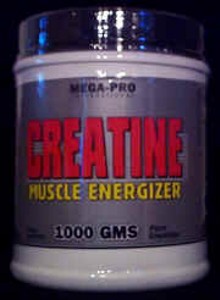 Creatine is often used as a food supplement. In this study,
rats received a creatine-supplemented diet for a month prior to L-Dopa
therapy. During L-Dopa treatment, significant reductions in abnormal
involuntary movements were observed in the creatine-supplemented group,
without any worsening of Parkinson's Disease symptoms. Further
investigation revealed significant changes in the levels of creatine both
after L-DOPA alone and with the supplemented diet. The researchers stated
that they had demonstrated that combining L-Dopa therapy with a diet
enriched in creatine could reduce dyskinesia, and that this may represent
a new way to control the motor complications associated with the use of
L-Dopa.
Creatine is often used as a food supplement. In this study,
rats received a creatine-supplemented diet for a month prior to L-Dopa
therapy. During L-Dopa treatment, significant reductions in abnormal
involuntary movements were observed in the creatine-supplemented group,
without any worsening of Parkinson's Disease symptoms. Further
investigation revealed significant changes in the levels of creatine both
after L-DOPA alone and with the supplemented diet. The researchers stated
that they had demonstrated that combining L-Dopa therapy with a diet
enriched in creatine could reduce dyskinesia, and that this may represent
a new way to control the motor complications associated with the use of
L-Dopa.
�
1st September 2008 - New research
SEXUAL DYSFUNCTION IN PARKINSON'S DISEASE
European Journal of Neurology [2008] Aug 27;
[Epub ahead of print] (Celikel E, Ozel-Kizil ET, Akbostanci MC, Cevik A.)
Complete abstract
Sexual dysfunction in patients with Parkinson's disease has not been very
well studied, as most of the research has has restrictions such as like
having no control group, or has used invalid assessment tools. This study
aimed to examine different sexual functions in patients with Parkinson's
Disease and compare them with matched non-parkinsonian
controls by using a valid questionnaire. Predicting factors of sexual
dysfunction in Parkinson's Disease were also investigated. The sample
consisted of an equal number of people with Parkinson's Disease and age
and sex matched controls. Sexual functions were evaluated by
Arizona Sexual Experiences Scale (ASEX).
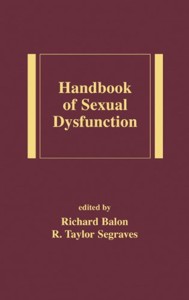 There is a score of 1 to 6
for each question. Possible total scores range from 5 to 30, with the
higher scores indicating more sexual dysfunction. Female patients were
found to have reduced sex drive and were less satisfied with orgasm, while
male patients actually had easier orgasms than did the controls. Increased
age and female sex were predictive of reduced sex drive and sexual
arousal. Ability to reach orgasm and satisfaction with orgasm were
associated with female sex, while erection/lubrication was associated with
marital status. The severity and duration of Parkinson's Disease, as well
as the severity of anxiety and depression were, contrary to what is often
assumed, not associated with Sexual dysfunction.
There is a score of 1 to 6
for each question. Possible total scores range from 5 to 30, with the
higher scores indicating more sexual dysfunction. Female patients were
found to have reduced sex drive and were less satisfied with orgasm, while
male patients actually had easier orgasms than did the controls. Increased
age and female sex were predictive of reduced sex drive and sexual
arousal. Ability to reach orgasm and satisfaction with orgasm were
associated with female sex, while erection/lubrication was associated with
marital status. The severity and duration of Parkinson's Disease, as well
as the severity of anxiety and depression were, contrary to what is often
assumed, not associated with Sexual dysfunction.
�
�
.gif)
.gif)
 The antioxidant efficacy of these two substances was
assessed by evaluating the plasma activity of superoxide dismutase and
glutathione peroxidase. Brain concentration of L-dopa and dopamine, and
central nervous system effects were assessed after oral administration of
each of the codrugs. The results suggest that the codrugs are devoid of
significant antioxidant activity. However, it was found that they can
enable sustained delivery of dopamine and can improve L-dopa and dopamine
release in the brain. As L-dopa is not yet available as these two codrugs,
there is the possibility of taking the additional substances with L-dopa
in food or supplement form.
The antioxidant efficacy of these two substances was
assessed by evaluating the plasma activity of superoxide dismutase and
glutathione peroxidase. Brain concentration of L-dopa and dopamine, and
central nervous system effects were assessed after oral administration of
each of the codrugs. The results suggest that the codrugs are devoid of
significant antioxidant activity. However, it was found that they can
enable sustained delivery of dopamine and can improve L-dopa and dopamine
release in the brain. As L-dopa is not yet available as these two codrugs,
there is the possibility of taking the additional substances with L-dopa
in food or supplement form. There are a number of known toxic causes of Parkinson's Disease. For more
information go to the
There are a number of known toxic causes of Parkinson's Disease. For more
information go to the
 Amsterdam Molecular Therapeutics (AMT) have just announced that it has
obtained a license from Amgen to use their GDNF gene for the development
of a gene therapy treatment for Parkinson�s disease.
For more
information go to
Amsterdam Molecular Therapeutics (AMT) have just announced that it has
obtained a license from Amgen to use their GDNF gene for the development
of a gene therapy treatment for Parkinson�s disease.
For more
information go to
 Common
means : Maneb is used as a fungicide. There is a greatly increased
likelihood of developing symptoms by people involved in horticulture and
agriculture [2].
Common
means : Maneb is used as a fungicide. There is a greatly increased
likelihood of developing symptoms by people involved in horticulture and
agriculture [2].  Symptoms
of toxicity : Plastic rigidity with cogwheel phenomenon, headache,
fatigue, nervousness, memory complaints, and sleepiness, other neurologic
signs, such as postural tremor, cerebellar signs, and bradykinesia [1];
damaging effects on the dopaminergic system [4-8], that it can, quite
unusually, even affect prior to birth [4-8]. This suggests that somebody
could be affected by fungicide because of exposure to it
during their pregnancy.
Symptoms
of toxicity : Plastic rigidity with cogwheel phenomenon, headache,
fatigue, nervousness, memory complaints, and sleepiness, other neurologic
signs, such as postural tremor, cerebellar signs, and bradykinesia [1];
damaging effects on the dopaminergic system [4-8], that it can, quite
unusually, even affect prior to birth [4-8]. This suggests that somebody
could be affected by fungicide because of exposure to it
during their pregnancy.  The frequency of pain in Parkinson's Disease was
70%, and 63% in others. What the study shows is that pain is common in
most people, regardless of whether or not they have Parkinson's Disease.
Parkinson's Disease makes it more likely, but not by much. The Dystonic
pain that is experienced by some in Parkinson's Disease, was claimed to
make the difference between the two groups, because non-dystonic pain was
almost equal in the two groups. Muscular cramps, as expected, were more
common in Parkinson's Disease. What the study shows is that Parkinson's
Disease, muscular cramps, and general pain should be considered as
separate medical problems.
The frequency of pain in Parkinson's Disease was
70%, and 63% in others. What the study shows is that pain is common in
most people, regardless of whether or not they have Parkinson's Disease.
Parkinson's Disease makes it more likely, but not by much. The Dystonic
pain that is experienced by some in Parkinson's Disease, was claimed to
make the difference between the two groups, because non-dystonic pain was
almost equal in the two groups. Muscular cramps, as expected, were more
common in Parkinson's Disease. What the study shows is that Parkinson's
Disease, muscular cramps, and general pain should be considered as
separate medical problems. The
supplement is simply added on to what somebody is already taking. After
lengthy use, some people have already very gradually rid their Parkinson's
Disease symptoms. Others have hugely reduced their symptoms and continue
to improve. This has enabled some people to also rid or greatly reduce
their Parkinson's Disease drugs. A full scale clinical trial has been
arranged at the Addenbrookes Hospital in Cambridge, England, but may be
transferred to Ireland, as The Parkinson Association of Ireland are
presently considering their involvement. The supplement is currently
available as
The
supplement is simply added on to what somebody is already taking. After
lengthy use, some people have already very gradually rid their Parkinson's
Disease symptoms. Others have hugely reduced their symptoms and continue
to improve. This has enabled some people to also rid or greatly reduce
their Parkinson's Disease drugs. A full scale clinical trial has been
arranged at the Addenbrookes Hospital in Cambridge, England, but may be
transferred to Ireland, as The Parkinson Association of Ireland are
presently considering their involvement. The supplement is currently
available as  Creatine is often used as a food supplement. In this study,
rats received a creatine-supplemented diet for a month prior to L-Dopa
therapy. During L-Dopa treatment, significant reductions in abnormal
involuntary movements were observed in the creatine-supplemented group,
without any worsening of Parkinson's Disease symptoms. Further
investigation revealed significant changes in the levels of creatine both
after L-DOPA alone and with the supplemented diet. The researchers stated
that they had demonstrated that combining L-Dopa therapy with a diet
enriched in creatine could reduce dyskinesia, and that this may represent
a new way to control the motor complications associated with the use of
L-Dopa.
Creatine is often used as a food supplement. In this study,
rats received a creatine-supplemented diet for a month prior to L-Dopa
therapy. During L-Dopa treatment, significant reductions in abnormal
involuntary movements were observed in the creatine-supplemented group,
without any worsening of Parkinson's Disease symptoms. Further
investigation revealed significant changes in the levels of creatine both
after L-DOPA alone and with the supplemented diet. The researchers stated
that they had demonstrated that combining L-Dopa therapy with a diet
enriched in creatine could reduce dyskinesia, and that this may represent
a new way to control the motor complications associated with the use of
L-Dopa.